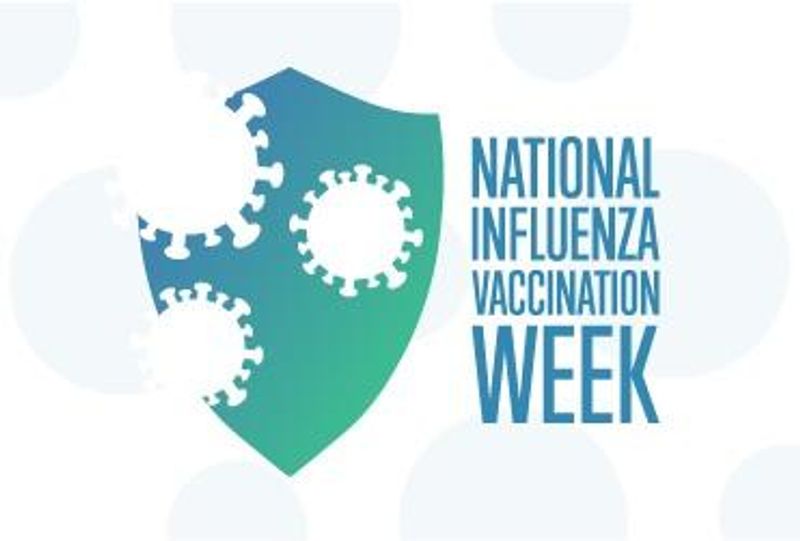The best way to help protect from the virus is an annual flu vaccination.1 It has been shown to help lower the risk of catching the flu as well as help reduce the severity of illness for those who still experience symptoms of the flu.1
At Sanofi, we believe we must spread awareness of the severity of the flu to increase vaccination and help reduce its potential impacts.
Did You Know?
From October 1, 2023-February 3, 2024, 22-42 million flu-related illnesses occurred in the U.S.2
The flu can lead to complications like flu-related hospitalizations, pneumonia, and heart attack.3,4
According to CDC, flu vaccines can be co-administered with COVID-19 vaccines/COVID-19 booster shots on the same day, as well as within 14 days of each other.5 Talk to your doctor about which options are best suited for you.
The flu can be unpredictable. While the 2021-2022 flu season saw cases that peaked late in the season (April/May), the 2023-2024 season saw cases that peaked as early as December.6,7
Flu vaccines can help reduce the risk of illness by 40-60% when they are well-matched against circulating flu viruses, according to the CDC.8
There are different flu shot options for different age groups and high-risk populations.1 Talk to your doctor about what your options are.
Some People Are More at Risk
While anyone can get the flu, certain groups are at increased risk of flu-related infection and complications. High-risk individuals include anyone who has a chronic health condition (even if these conditions are under control), young children, pregnant women, older adults, and certain racial and ethnic minority groups.9
Older Adults
Older adults, especially those 65+, represent the majority of flu-related hospitalizations and account for 6x the number of deaths from flu-related complications compared to every other age group combined.10
Respiratory Conditions
The flu can worsen symptoms for people living with respiratory problems, such as COPD, asthma, or cystic fibrosis, and may lead to pneumonia.11
Heart Disease
The flu can be especially dangerous for those living with cardiovascular diseases. A 10-year study of 1,227 adults aged 40+ found that a first heart attack is about 10x more likely following a flu infection. It also examined 762 adults aged 40+ and showed an ~8x increase in the likelihood of first stroke following a flu infection.4
Study limitations:
*Individual non-influenza respiratory virus impact and age impact on vascular events were not investigated. During the study period there were changes in microbiological testing practices (e.g., PCR was not widely used in 2004). The day after the date of respiratory sampling was used as the start of the risk period.
Diabetes
Even when well-managed, people with diabetes (type 1, type 2, or gestational) are at an increased risk of serious flu-related complications. A study of 162 hospitalized flu patients aged <1 to 85 years showed that adults living with diabetes may be at a ~3x higher risk of hospitalization and a 4x higher risk of ICU admission.12
Study limitations:
This study was limited to those with PCR-confirmed influenza A H1N1. Medical history was obtained solely by patient interview.12
Disparities
Certain racial and ethnic minority groups – including Black, Latinx, and Indigenous Americans – are less likely to get flu vaccines and more likely to be hospitalized for flu-related complications.9
Our Continued Commitment
At Sanofi, we've been working to help protect the public from the flu and its complications for over 70 years. We've continually integrated advanced technology and approaches, including egg-based flu vaccines, recombinant proteins, and mRNA, into our work to provide the protection needed.

Trying to Predict the Unpredictable: Preparing for this Flu Season
References
- Centers for Disease Control and Prevention. Key Facts About Seasonal Flu Vaccination. Available at https://www.cdc.gov/flu/prevent/keyfacts.htm. Accessed March 2023.
- Centers for Disease Control and Prevention. 2023-2024 U.S. Flu Season: Preliminary In-Season Burden Estimates. Available at: https://protect-de.mimecast.com/s/skErCz6rjYFKxNq9mt48WPg?domain=cdc.gov. Accessed February 2024.
- Jain S, Self WH, Wunderink RG. Community-acquired pneumonia requiring hospitalization among U.S. adults. N Engl J Med; 2015;373:415-27.
- Warren-Gash C, Blackburn R, Whitaker H,et al. Laboratory-confirmed respiratory infections as triggers for acute myocardial infarction and stroke: a self-controlled case series analysis of national linked datasets from Scotland. Eur Respir J.2018; 51(3):1701794
- Centers for Disease Control and Prevention. Interim Guidance for Routine and Influenza Immunization Services During the COVID-19 Pandemic. Available at: https://www.cdc.gov/vaccines/pandemic-guidance/. Accessed March 2023.
- Centers for Disease Control and Prevention. Weekly U.S. Influenza Surveillance Report. Available at https://www.cdc.gov/flu/weekly/index.htm. Accessed March 2023.
- Centers for Disease Control and Prevention. Weekly U.S. Influenza Surveillance Report. Week of February 3, 2024. Available at: https://protect-de.mimecast.com/s/dYMxCA6RkKFjnJO21f8UnrJ?domain=cdc.gov. Accessed February 2024.
- Centers for Disease Control and Prevention. FluView Summary Ending on October 1, 2022. Available at https://www.cdc.gov/flu/weekly/weeklyarchives2021-2022/week39.htm. Accessed March 2023.
- Centers for Disease Control and Prevention. Vaccine Effectiveness: How Well Do the Flu Vaccines Work? Available at: https://cdc.gov/flu/vaccines-work/vaccineeffect.htm. Accessed March 2023.
- Centers for Disease Control and Prevention. People at Higher Risk of Flu Complications. Available at: https://www.cdc.gov/flu/highrisk/index.htm. Accessed March 2023.
- National Foundation for Infectious Diseases. Influenza and Older Adults. Available at: https://www.nfid.org/infectious-diseases/influenza-and-older-adults/. Accessed February 2023.
- Centers for Disease Control and Prevention. Flu and People with Asthma. Available at: https://www.cdc.gov/flu/highrisk/asthma.htm. Accessed March 2023.
- Allard R, Leclerc, P, Tremblay C, Tannenbaum, T. Diabetes and the severity of pandemic influenza A (H1N1) infection. Diabetes Care. 2010 Jul;33(7):11491-1493. Accessed March 2023.
MAT-US-2303252-v2.0-02/2024



